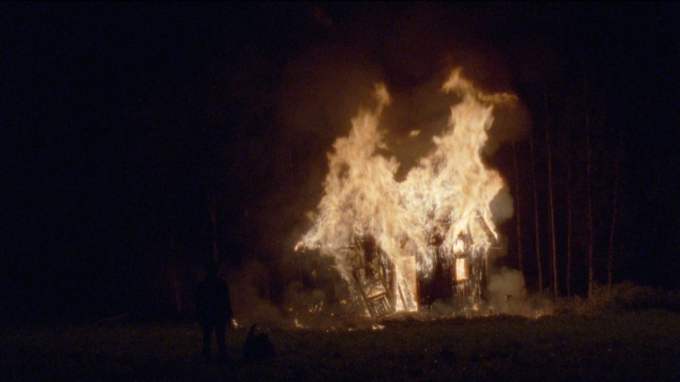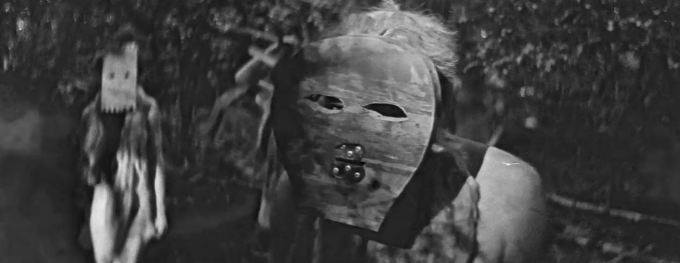
Ben Rivers and Ben Russell’s A Spell to Ward Off the Darkness is a, confusingly enough, hypnotic yet frustrating documentation of Estonia, Finland and Norway that undoubtedly shares much of Stan Brakhage’s “back to the land” philosophy, albeit few if any of his aesthetics. Certainly, as a visual and aural reflection on a spiritual commune between man and nature, A Spell works best when it is at both its quietest and its loudest – both of these states most brilliantly carried on the shoulders of semi-protagonist, avant-garde / black metal / drone pioneer Robert Aiki Aubrey Lowe.
Unfortunately, what certainly feels like the lion’s share of A Spell is not devoted to Lowe, silently rowing staring with stoned, unblinking eyes at a burning wooden hut, or performing some of the most surreal harsh vocals in extreme music today, but instead to a group of fairly insufferable hippies who mumble and murmur aimless anecdotes and half-baked social theories which, speaking as a mid-20s Arts & Humanities graduate living in east London, I really don’t need to watch a Ben Rivers film to hear. I don’t want to be giving A Spell the relatively pedestrian rating of only 3.5 stars but, beyond having to dock the rating due to the tedium of the aforementioned section, it had to lose another half due to the actual – presumably unplanned – alienation effect this section has on the rest of the beautifully serene film. As I alluded to earlier, A Spell does operate on a paradox here – if the rest of the film didn’t operate so beautifully, it might have ironically ended up with a slightly higher rating. Life is strange.
There is, undoubtedly, a Bazinian beauty to A Spell which absolutely works to the benefit of its philosophy – it is the realism of the cinematic praxis here which endows the film so much with a spirituality of form. Such a relationship to the pro-filmic environment is what allows the opening shot and the final 45 minutes such consistency. Much of this rests on the camerawork, which achieves at its best moments a perfect harmony between phenomenology and restrained documentation. The opening shot is a methodical volley of pans, back and forth across a vast and seemingly completely secluded lake, all of which stop short of being 360⁰ as though to self consciously deny the camera the privilege of an omniscient position. Likewise, in the black metal performance in the last half hour, shot entirely in one take, the chiaroscuro on-location mise-en-scène of the stage, only emphasised when contrasted with the band’s corpse paint, gives the scene an ecstatically disorientated ambience, as the camera snakes around the performers, almost entirely in close-up to extreme-close-up, in such a way that we are left with no concrete understanding of the geography of the stage, or the positioning of the musicians. They seem to appear randomly in the line of the lens’ sight, again stressing the limitations of the artist’s hand in the face of an holistic omnipresence of of man-nature communal spirituality (an ever-increasing preoccupation of black metal lyrics, both in its Scandinavian birthplace and beyond, from France to the Pacific Northwest).
There is so very much to love about A Spell to Ward Off the Darkness, I can only hope that, the next time I watch it, I’ll be in a slightly better mood and be able to afford it at the very least half an extra star.
***1/2

